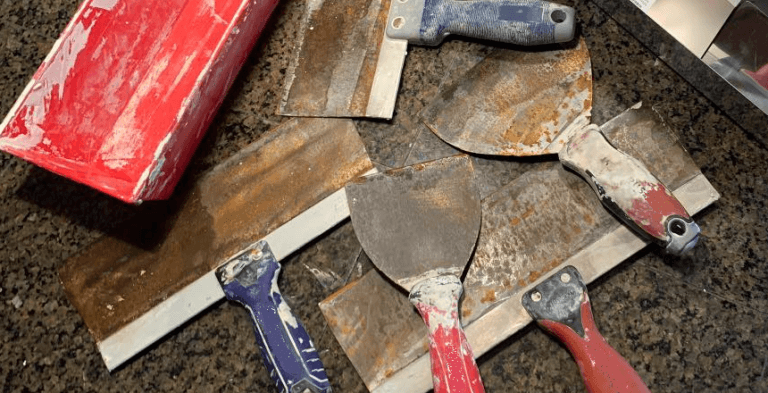The Best Primer for Drywall Before Painting
When it comes to prepping drywall for painting, one critical step that often gets overlooked is applying the right primer. As a homeowner and a DIY enthusiast, I’ve learned the hard way that skipping this step can lead to disastrous results. Picture this: after a long week of laboriously taping, sanding, and applying texture to my newly drywall-washed living room, I excitedly rolled on the paint, only to find the surface uneven and splotchy. This was my turning point, the moment I realized that a high-quality primer is essential for achieving the perfect paint finish.
In this blog post, I’ll share my firsthand experience, expert insights, and comprehensive information about the best primers for drywall. You’ll be equipped with the knowledge to make informed decisions, enhancing your home improvement projects to look professional and polished.
Why Use Primer on Drywall?
Before we jump into the best primers available, let’s discuss why a primer is crucial for drywall:
-
Sealing Porous Surfaces: New drywall is highly porous, which can absorb paint and lead to uneven finishes. A good primer creates a barrier, ensuring that the paint goes on smoothly.
-
Enhancing Adhesion: Primer improves the paint’s adhesion, which helps to reduce peeling and chipping in the long run.
-
Color Consistency: Primer helps to unify the surface and improves the vibrancy of the topcoat, especially if you’re painting a lighter color on a darker surface.
- Hiding Imperfections: Primers are designed to cover up joint tape, patching, and other imperfections that might detract from the overall finish.
Top Choices for Drywall Primers
1. Kilz Premium High-Hide Stain Blocking Primer
Why it’s great: Kilz Premium is well-known in the industry for its excellent hide and stain-blocking properties. It’s perfect for new drywall and provides a smooth base for painting.
Benefits:
- Blocks tough stains
- Quick drying time (usually within one hour)
- Washable and easy to clean up with soap and water
Ideal For: Both interior and exterior surfaces, especially when transitioning from a dark to a light color.
2. Zinsser Bull’s Eye 1-2-3 Primer
Why it’s great: This water-based primer is also a fan favorite for its versatility. It works on a variety of surfaces, making it an excellent option for covering up potential stains and sealing new drywall.
Benefits:
- Can be used on previously painted surfaces
- Fast drying time (usually about 30 minutes)
- Mold and mildew resistant formula
Ideal For: Interiors where there’s potential for moisture, such as kitchens and bathrooms.
3. Behr Premium Plus Interior/Exterior Multi-Surface Primer & Sealer
Why it’s great: Behr is another trusted brand in the paint industry, and their multi-surface primer boasts exceptional flexibility, making it perfect for new drywall.
Benefits:
- Blocks stains and odors
- Works on multiple surfaces, including wood and metal
- Excellent hide and smooth application
Ideal For: Both interior and exterior applications, especially for larger projects involving different surfaces.
How to Apply Primer on Drywall: A Step-by-Step Guide
Step 1: Prepare the Surface
- Sanding: Lightly sand the drywall surface, focusing on areas where the seams are visible. This will help the primer adhere better.
- Cleaning: Wipe down the surface with a damp cloth to remove any dust or debris.
Step 2: Choose the Right Tools
- Brushes and Rollers: Use a high-quality brush for corners and edges, and a roller for larger areas.
- Trays: Invest in a paint tray to hold your primer and keep things tidy.
Step 3: Apply the Primer
- Cut In: Start by using a brush to cut in around the edges and corners of the drywall.
- Roll On: After cutting in, use a roller to apply the primer to the bigger wall sections. Use long, even strokes to ensure a smooth finish.
- Allow to Dry: Check the manufacturer’s guidelines for drying time but expect it to take about one hour under normal conditions.
Step 4: Inspect & Reapply if Necessary
After drying, check if any areas require a second coat for optimal coverage, as this may depend on your drywall’s texture and porosity.
Common Mistakes to Avoid
- Skipping the Primer: The temptation to skip this step can lead to poor adhesion and surface quality.
- Using the Wrong Type: Not all primers are suitable for drywall. Ensure you select a primer specifically designed for this purpose.
- Improper Drying Times: Ensure adequate ventilation and follow drying time recommendations for the best results.
Expert Tips for Choosing and Applying Primer
- Consider Paint Compatibility: Ensure your primer is compatible with the paint you plan to use (water-based vs. oil-based).
- Focus on Quality: Investing in a quality primer will yield better results than cheaper alternatives.
- Be Generous: Don’t skimp on applying the primer; it’s an essential step that pays off in the long run.
Conclusion
In conclusion, choosing the best primer for drywall before painting is crucial in ensuring a flawless finish. By investing in a high-quality primer and following the proper application techniques, you can turn your next project into a stunning success.
Do you have any favorite primers or tips for prepping drywall? Share your thoughts in the comments below!
Share & Resources
If you found this guide helpful, please share it on Pinterest, Facebook, or Reddit! Your support helps others find useful drywall repair tips.
Contractors, home improvement bloggers, and DIY forums: Feel free to link back to this article to help your audience with expert drywall repair tips.
Together, let’s empower our communities with the knowledge to improve our homes, one drywall project at a time!
For more related content, check out:


